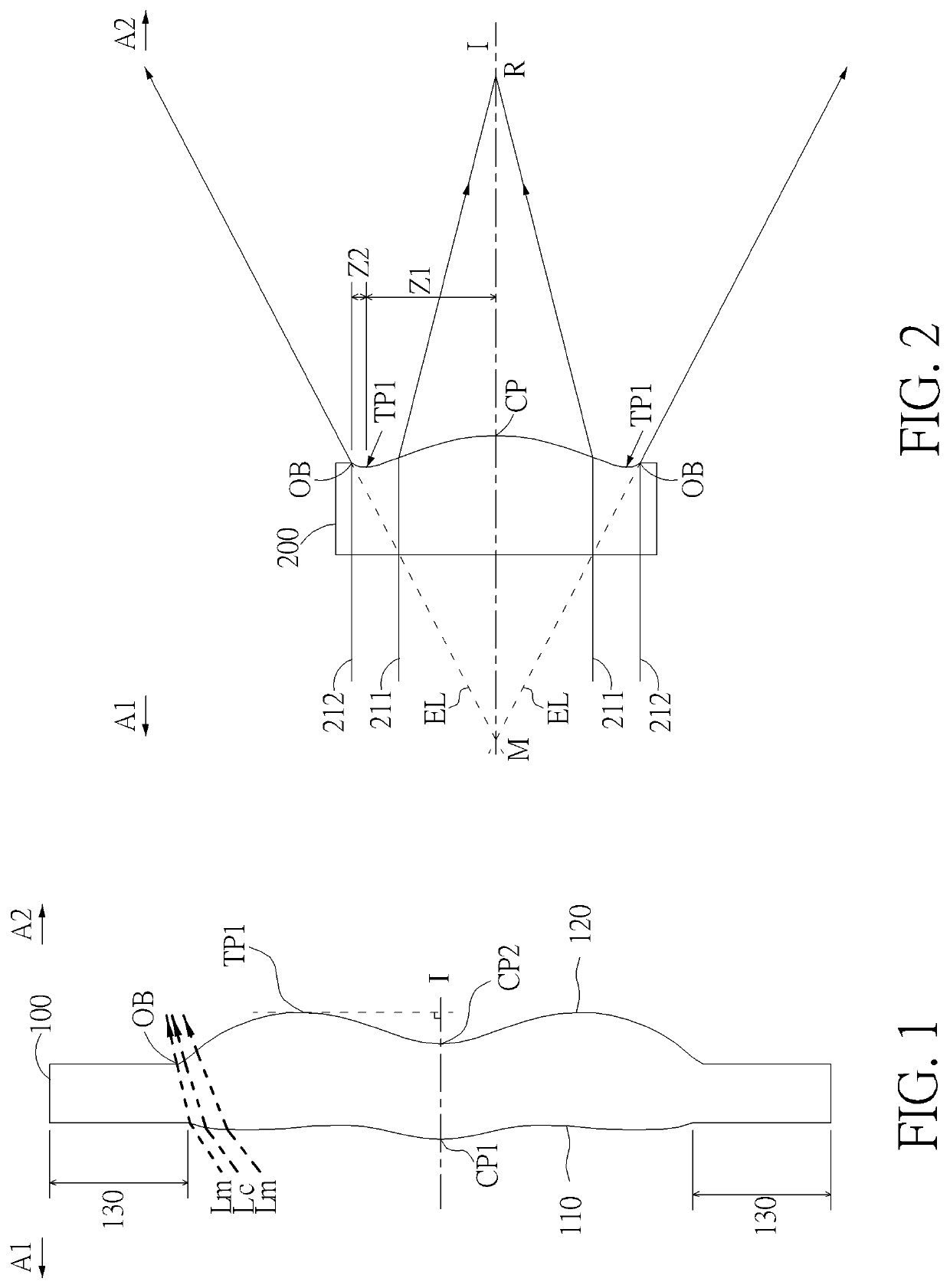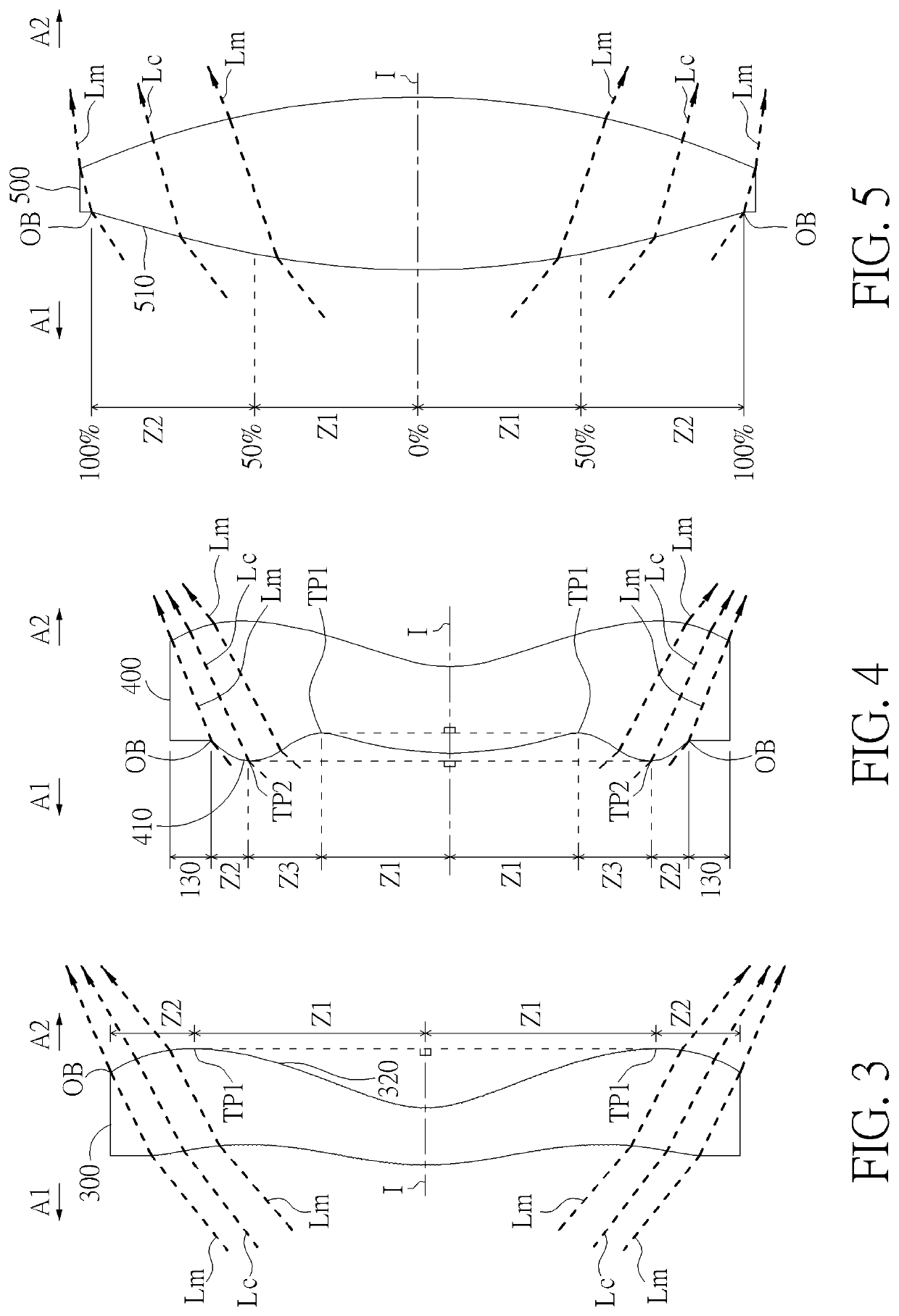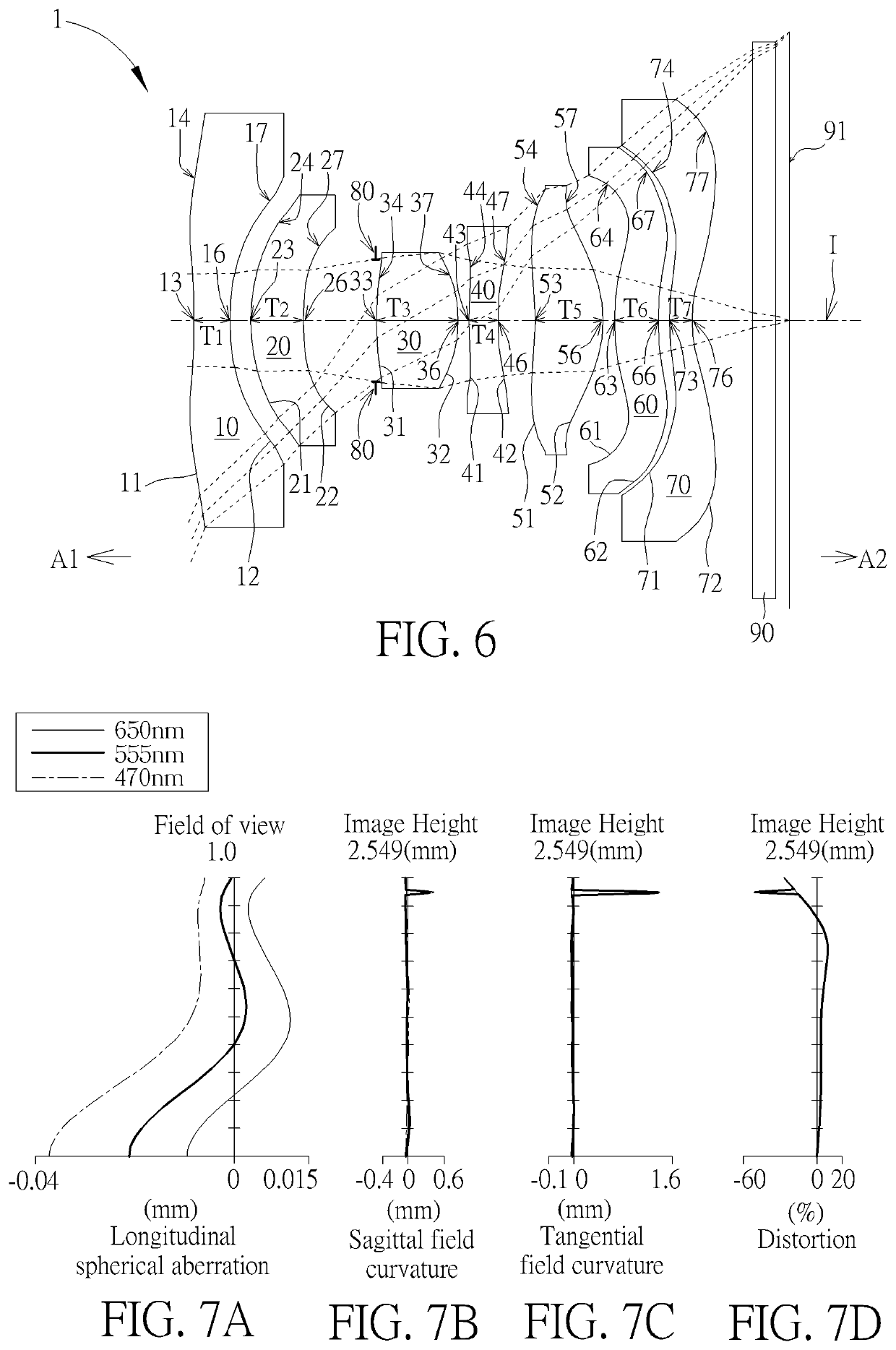Optical imaging lens
a technology of optical imaging and lens, applied in the field of optical imaging lens, can solve the problems of not being conducive to the thinning of mobile phones and digital cameras, and achieve the effects of shortening the system length, and reducing the number of lenses
- Summary
- Abstract
- Description
- Claims
- Application Information
AI Technical Summary
Benefits of technology
Problems solved by technology
Method used
Image
Examples
first embodiment
[0110]Please refer to FIG. 6 which illustrates the first embodiment of the optical imaging lens 1 of the present invention. Please refer to FIG. 7A for the longitudinal spherical aberration on the image plane 91 of the first embodiment; please refer to FIG. 7B for the field curvature aberration on the sagittal direction; please refer to FIG. 7C for the field curvature aberration on the tangential direction; and please refer to FIG. 7D for the distortion aberration. The Y axis of the spherical aberration in each embodiment is “field of view” for 1.0. The Y axis of each aberration and the distortion in each embodiment stands for “image height” (ImgH), and the image height of the first embodiment is 2.549 mm.
[0111]Only the seven lens elements 10, 20, 30, 40, 50, 60 and 70 of the optical imaging lens 1 of the first embodiment have refracting power. The optical imaging lens 1 also has an aperture stop 80, a filter 90, and an image plane 91. The aperture stop 80 is provided between the se...
second embodiment
[0126]Please refer to FIG. 8 which illustrates the second embodiment of the optical imaging lens 1 of the present invention. It is noted that from the second embodiment to the following embodiments, in order to simplify the figures, only the components different from what the first embodiment has, and the basic lens elements will be labeled in figures. Other components that are the same as what the first embodiment has, such as the object-side surface, the image-side surface, the optical axis region and the periphery region will be omitted in the following embodiments. Please refer to FIG. 9A for the longitudinal spherical aberration on the image plane 91 of the second embodiment, please refer to FIG. 9B for the field curvature aberration on the sagittal direction, please refer to FIG. 9C for the field curvature aberration on the tangential direction, and please refer to FIG. 9D for the distortion aberration. The components in this embodiment are similar to those in the first embodi...
third embodiment
[0128]Please refer to FIG. 10 which illustrates the third embodiment of the optical imaging lens 1 of the present invention. Please refer to FIG. 11A for the longitudinal spherical aberration on the image plane 91 of the third embodiment; please refer to FIG. 11B for the field curvature aberration on the sagittal direction; please refer to FIG. 11C for the field curvature aberration on the tangential direction; and please refer to FIG. 11D for the distortion aberration. The components in this embodiment are similar to those in the first embodiment, but the optical data such as the curvature radius, the lens thickness, the aspheric surface or the back focal length in this embodiment are different from the optical data in the first embodiment.
[0129]The optical data of the third embodiment of the optical imaging lens are shown in FIG. 26 while the aspheric surface data are shown in FIG. 27. In this embodiment, TTL=5.195 mm; EFL=1.436 mm; HFOV=66.889 degrees; ImgH=2.550 mm; Fno=1.800. I...
PUM
 Login to View More
Login to View More Abstract
Description
Claims
Application Information
 Login to View More
Login to View More - R&D
- Intellectual Property
- Life Sciences
- Materials
- Tech Scout
- Unparalleled Data Quality
- Higher Quality Content
- 60% Fewer Hallucinations
Browse by: Latest US Patents, China's latest patents, Technical Efficacy Thesaurus, Application Domain, Technology Topic, Popular Technical Reports.
© 2025 PatSnap. All rights reserved.Legal|Privacy policy|Modern Slavery Act Transparency Statement|Sitemap|About US| Contact US: help@patsnap.com



